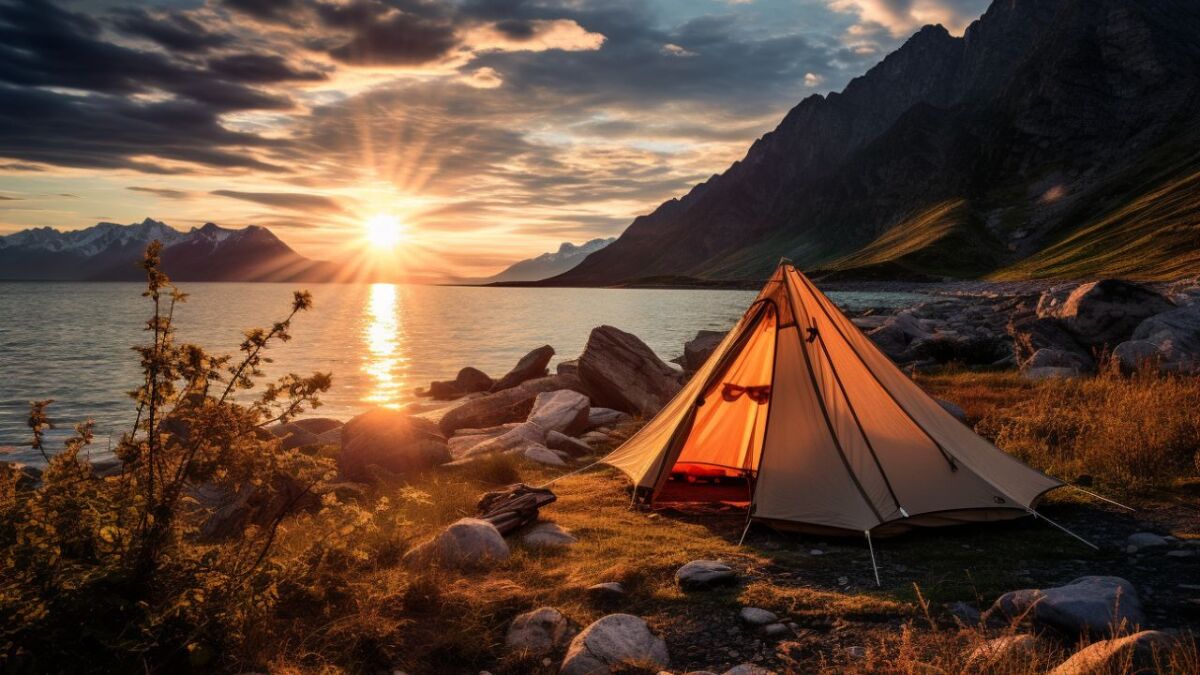
Orientation sun
Nomen
Meaning
Orientation sun refers to the practice of using the position of the sun to determine direction and navigate in outdoor environments. It is a crucial skill in survival, bushcraft, and wilderness activities, as it allows you to find your way without relying on modern technology. By observing the sun's movement throughout the day, you can determine east and west, and by extension, north and south. This knowledge is particularly useful when hiking, camping, or exploring unfamiliar terrain. Understanding orientation sun helps you stay on course, avoid getting lost, and ultimately enhances your outdoor experience.

Examples
„I love going on wilderness adventures, and one of the most important skills for survival is orientation.“
„Knowing how to use the sun for orientation can be a lifesaver when you're out in the wild.“
„For example, if you're lost in the woods, you can determine your direction by observing the position of the sun in the sky.“
„By knowing where the sun rises and sets, you can navigate your way back to safety.“
„Orientation with the sun is also useful for determining the time of day, which can help you plan your activities and stay on schedule.“
Origin
The word "orientation" comes from the Latin word "orientare," which means "to face the east." This is because the east is where the sun rises, and historically, people used the position of the sun to determine direction. The concept of using the sun for orientation has its roots in ancient civilizations, where travelers and explorers relied on the sun's position to navigate and find their way.
Over time, the practice of using the sun for orientation evolved and became more refined. In the field of survival and wilderness skills, understanding how to use the sun for navigation is crucial. By observing the sun's movement throughout the day, you can determine the cardinal directions (north, south, east, and west) and navigate your way through unfamiliar terrain.
Orientation with the sun has also been adapted for various outdoor activities, such as hiking, camping, and orienteering. It involves using a compass or other tools to align oneself with the sun's position and establish a sense of direction. This skill is particularly important in situations where you may not have access to modern navigation devices or when they fail.
Overall, the concept of orientation with the sun has deep historical roots and has been refined over time to become an essential skill in survival and outdoor activities. By understanding the sun's position and using it as a reference point, you can navigate your way through the wilderness and ensure your safety and well-being.
Synonyms
Sun orientation, Solar navigation, Celestial navigation, Sun tracking, Solar direction, Sun positioning, Solar orientation, Sun compass
Antonyms
West, East, North, South, Directionless, Disoriented, Lost, Confused
Relatives
Compass, Navigation, Direction, Map, GPS, Celestial navigation, Orienteering, Wayfinding
Historical and cultural importance
The orientation of the sun is a crucial skill in survival and outdoor activities. Understanding the historical and cultural relevance of this concept can help you navigate and make the most of your surroundings.
Throughout history, humans have relied on the position of the sun to determine direction and time. Ancient civilizations, such as the Egyptians and Mayans, developed sophisticated methods to track the movement of the sun and use it for navigation. They built structures like Stonehenge and pyramids that aligned with the sun's path during solstices and equinoxes.
In many cultures, the sun holds symbolic and spiritual significance. It is often associated with life, warmth, and energy. The rising and setting of the sun are seen as important moments of transition and renewal. In some indigenous traditions, the sun is considered a deity or a powerful force of nature.
When it comes to survival and outdoor activities, understanding the orientation of the sun is essential for various reasons. It can help you determine cardinal directions, especially when you don't have a compass or GPS. By observing the sun's movement throughout the day, you can estimate the time and plan your activities accordingly.
Moreover, the position of the sun affects the availability of sunlight and shadows, which can be crucial for finding shelter, identifying potential hazards, and navigating through dense vegetation. It also plays a role in determining the best spots for setting up camp, starting a fire, or positioning solar panels for maximum energy absorption.
Overall, the historical and cultural relevance of understanding the orientation of the sun highlights its importance in survival and outdoor skills. By honing this skill, you can enhance your ability to navigate, make informed decisions, and connect with the natural world around you.
More information about the term Orientation sun
Orientation to the Sun
When it comes to survival in the wilderness, one of the most important skills to have is the ability to orient yourself using the sun. The sun is a reliable and constant source of direction, and understanding how to use it can greatly increase your chances of finding your way back to civilization or navigating through unfamiliar terrain.
Using the Sun as a Compass
The sun rises in the east and sets in the west, making it a natural compass. By observing the sun's position in the sky, you can determine the cardinal directions. In the northern hemisphere, the sun is generally in the southern part of the sky during the day, while in the southern hemisphere, it is in the northern part of the sky. This knowledge can help you navigate and maintain a sense of direction.
One of the simplest methods to determine direction using the sun is the shadow stick method. Find a straight stick and place it upright in the ground. Mark the tip of the shadow cast by the stick with a small stone or twig. Wait for about 15 minutes and mark the tip of the new shadow. The line connecting the two marks will run east-west, with the first mark indicating west and the second mark indicating east.
Using the Sun for Timekeeping
In addition to providing direction, the sun can also be used as a natural clock. By observing the position of the sun in the sky, you can estimate the time of day. In the morning, the sun rises in the east and gradually moves higher in the sky. At noon, it reaches its highest point, directly south in the northern hemisphere and directly north in the southern hemisphere. In the afternoon, the sun starts to descend towards the west.
By understanding the sun's movement throughout the day, you can gauge how much time you have before sunset and plan your activities accordingly. This is especially crucial in survival situations, as being caught in the wilderness after dark can be dangerous.
Other Uses of the Sun in Survival
Aside from navigation and timekeeping, the sun has several other practical uses in a survival situation. One of the most important is using the sun to start a fire. By focusing the sun's rays using a magnifying glass or other reflective surface, you can create enough heat to ignite dry tinder and start a fire.
The sun can also be used to purify water. By filling a clear container with water and leaving it in direct sunlight for several hours, the sun's UV rays can kill harmful bacteria and parasites, making the water safe to drink.
Conclusion
Orientation to the sun is a fundamental skill for anyone venturing into the wilderness. By understanding how to use the sun as a compass, timekeeper, and tool, you can greatly enhance your chances of survival. Remember to always observe the sun's position in the sky, and use it to your advantage in navigating, timekeeping, fire starting, and water purification.
Back to overview

